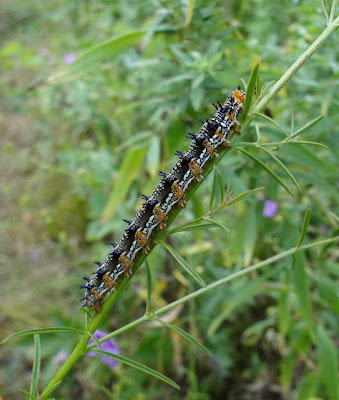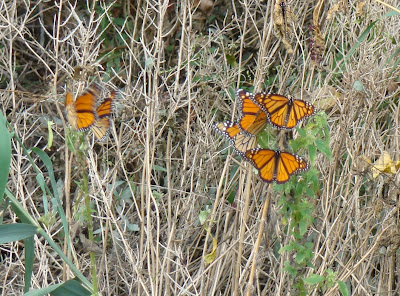
Little Yellow nectaring on Stiff Aster.
Yellow and purple are commonly used colors in nature, one finds various yellow butterflies along most country roads. And purple asters are certainly not unusual... yet both these southern species are highly sought-after in Ohio, and worth a second look.
Note the short "stiff" leaves on this aster, known from the roadsides of Shawnee forest, they make the Stiff Aster, Ionactis linariifolius a stand-out among the endless ranks of asters. At least 33 species of Asters are known in Ohio, but this rarity is strictly a southern specialist.
OH, the vagaries of names. Generally butterfly common names are standards one can rely upon, and Latin is the gold standard for plants as common names are frequently confusing. These lovely rarities seem to be bent on breaking all the rules.
Several common names are listed for this plant: Flax-leaf Aster, Flaxleaf Whitetop Aster, and in Ohio we prefer- Stiff Aster. Unfortunately the Latin name is nearly as confusing as the common name. Asters are no longer called "asters" in the botanical world, most have been regrouped to Symphyotrichums, but this little beauty is Ionactis.
And in a rare case of confusion in the butterfly world, there are two commonly used names for the Eurema lisa : Little Yellow or Little Sulphur butterfly. Since Eurema is the "Yellow" genus, many prefer "Little Yellow".
As Shakespeare noted: a rose by any other name would smell as sweet. And so, enjoy nature and realize the names may help us categorize the plants and butterflies, but do not impact upon their beauty.



















































